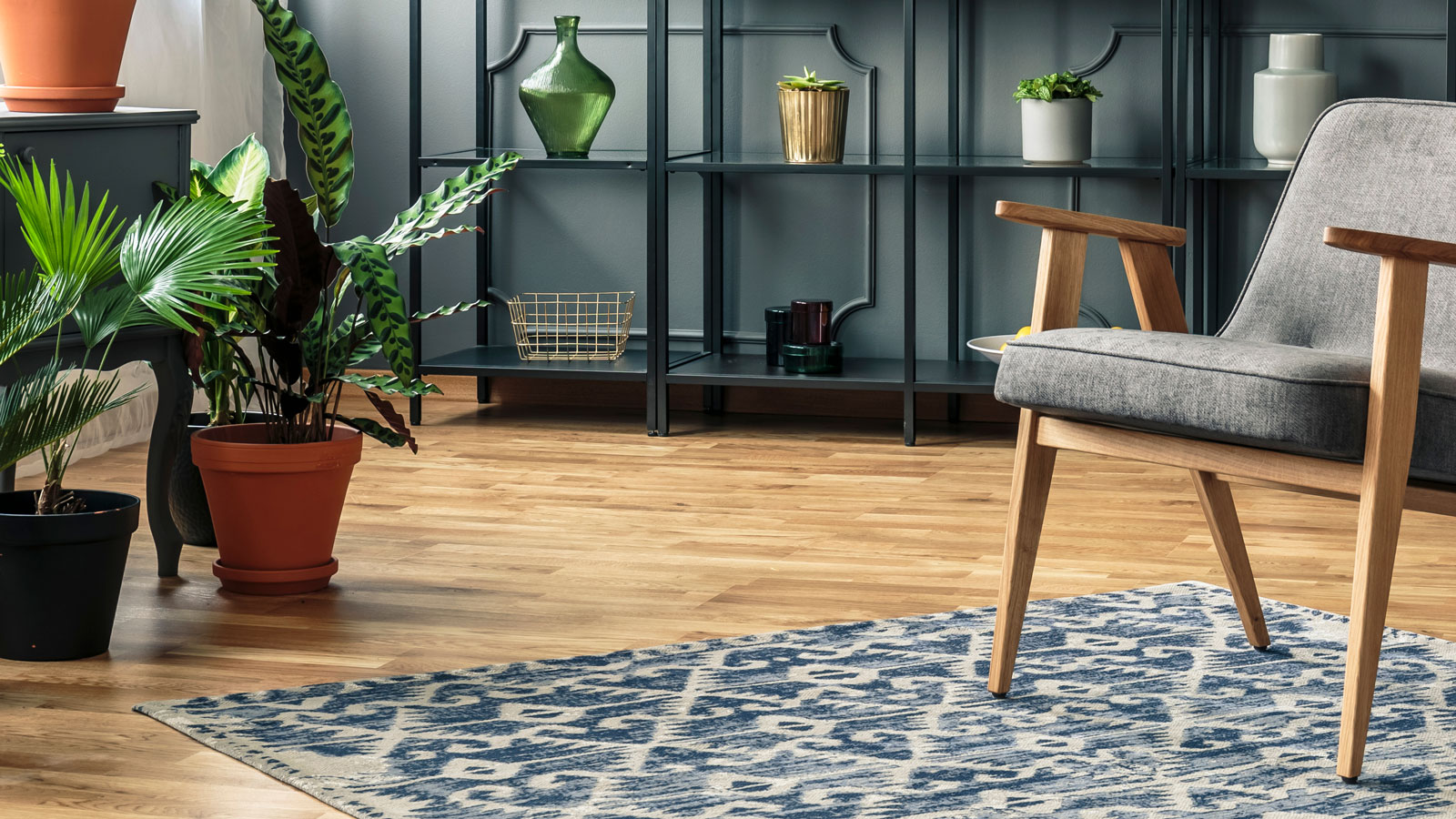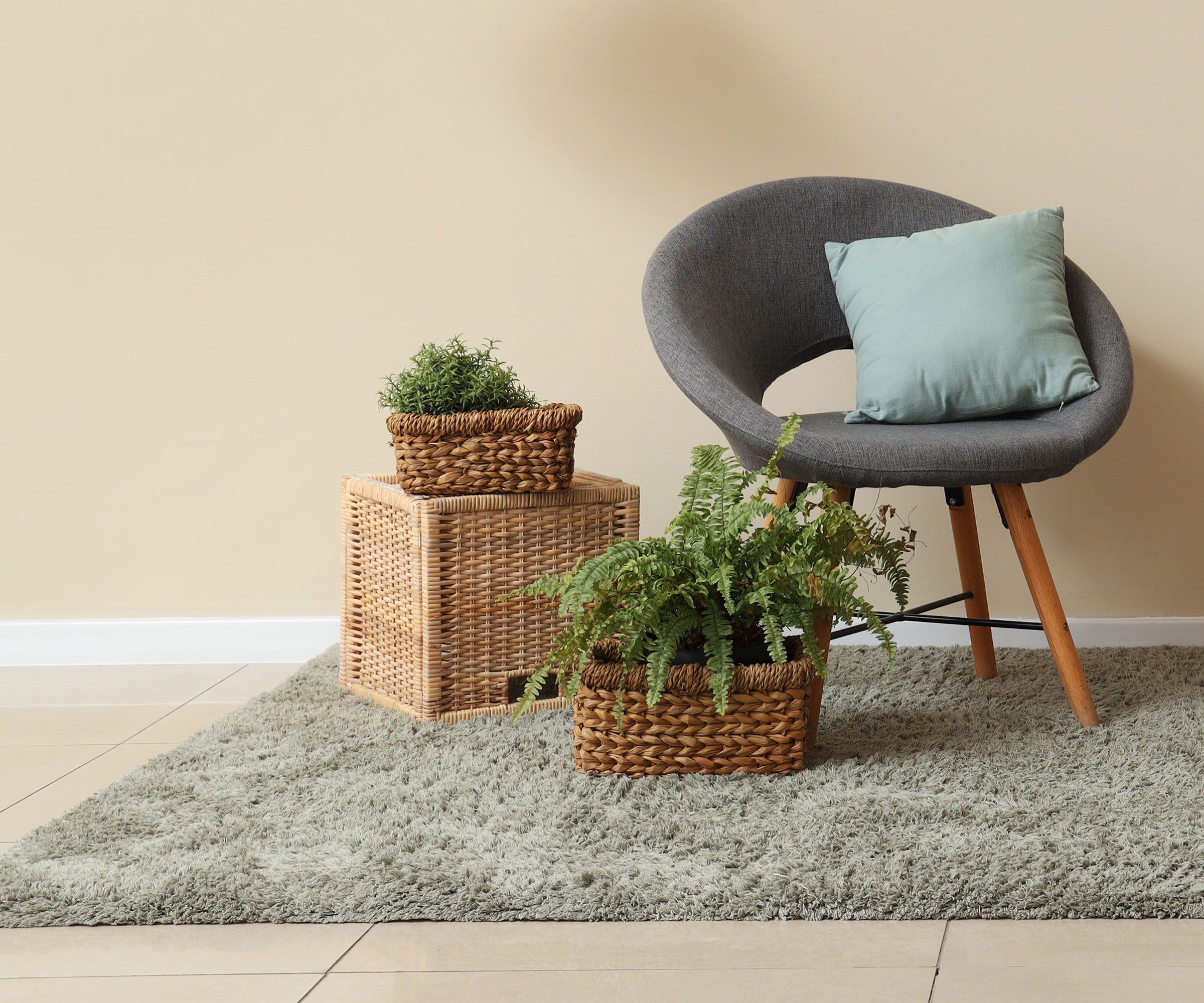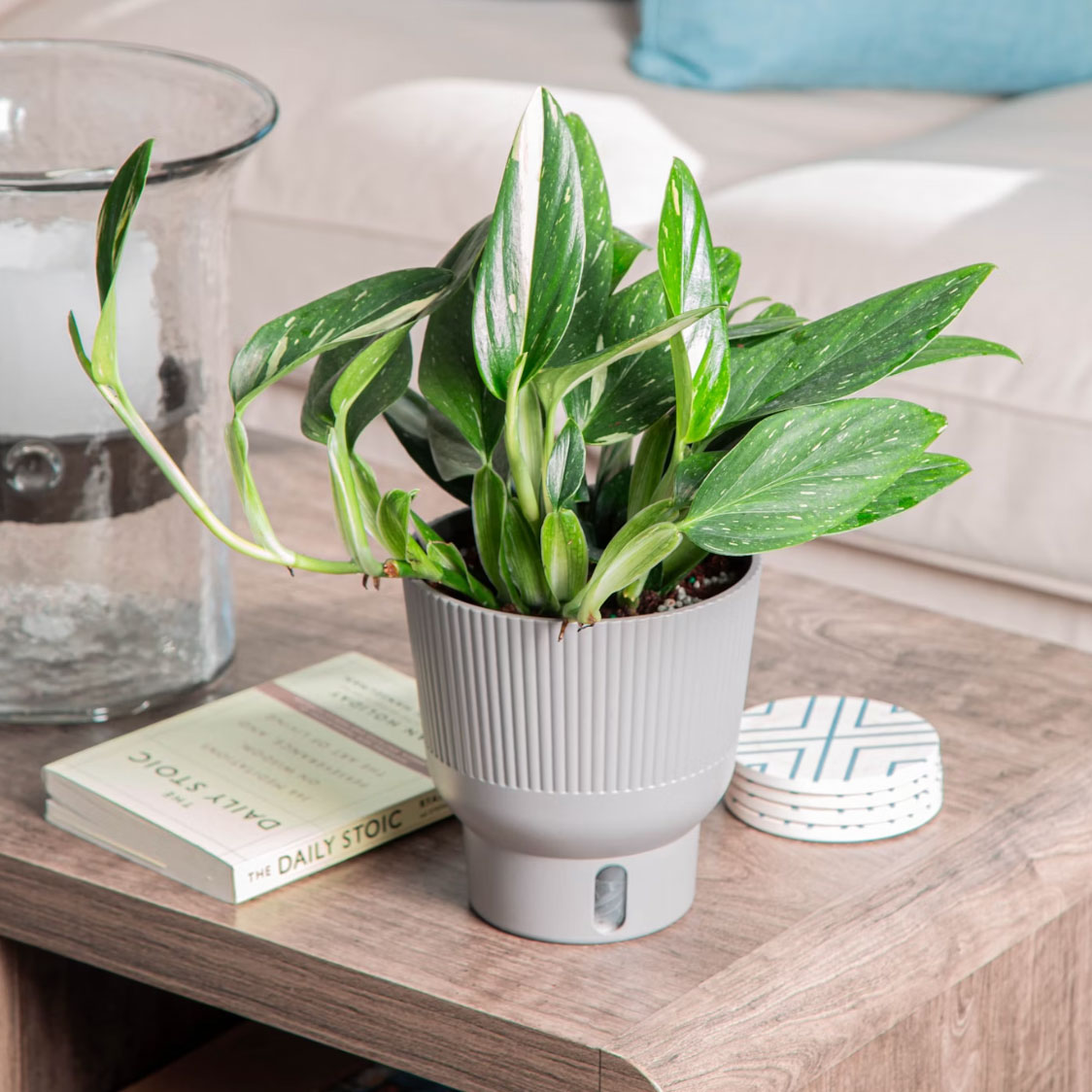How To Protect Wood Floors From Potted Plants: Keep Floors And Other Wooden Surfaces Safe
We love having plants around us, but it’s important to take care of wooden surfaces. Here’s how to how to protect wood floors from potted plants, as well as tables and other surfaces


Janey Goulding
There are so many benefits to having houseplants – bringing nature indoors to boost our mood, filtering the air, and looking beautiful, of course. But for anyone with a passion for creating beautiful indoor plant displays, it’s quickly going to become important for you to know how to protect wood floors from potted plants.
Any self-respecting houseplant owner needs to consider wood floors or furniture that could get damaged. As with many other aspects of plant care, prevention is better than cure. It’s all about protection and creating layers between the pot and the wood. It’s also important to keep an eye on how you water your plants where wooden surfaces may be affected. Here we explain how to protect wood floors from potted plants. Plus, we show you how to manage wooden surfaces such as shelves, bookcase, cupboards and tables.

Why Wooden Surfaces Get Damaged
First and foremost, you can save lots of hassle later if you take care when placing potted plants on wood floors and wooden furniture. Wood is a porous material. It absorbs water, leaving a mark. Water can also cause wood to warp. Even if you have mastered the art of watering houseplants lightly and carefully, there will be the inevitable splash.
If you aren’t quick to catch it, this can cause a plant pot stain on a wood floor or table. Hard to comprehend, but that relatively low maintenance peace lily or pothos could be racking up issues later if you leave this to chance. You can avoid this kind of damage by cleaning up water spills right away. However, even then, plants often leak water over time, causing damage that you might not notice until it’s too late.
Sensible watering techniques can make all the difference if you want to protect furniture from potted plants, even if you don’t necessarily need to water the likes of philodendron plants every day. It’s best to move plants to a sink or other area where they can drain fully when watered. When they are done draining, move them back to their usual spots.
It’s important to check containers regularly and clean under them as needed. If you notice water leaking out, or spot wet areas on the floor, take steps to resolve the situation as quickly as possible. Self-regulating or self-watering planters can also help reduce the risks associated with clumsy watering and wayward splashes.
Create Barriers Between Pots and Wood
Being able to protect a wood floor from potted plants means you can enjoy both without having to worry too much about nasty shocks later. For large specimen houseplants like elephant ears that you might want to position near the floor, this is particularly important. So as well as careful watering, you can also protect furniture from potted plants with these measures. Create a barrier between the container and the wooden surface:
- Saucers and Trays:
The most obvious solution is to place a tray or saucer under your plant. Most pots come with matching saucers that catch water from the drainage holes. If your pots don’t have these, you can find matching or similar trays at garden centers. - Cork or Felt Pot Protection:
Not everyone likes the look of a saucer under their plant pots. If you prefer a cleaner look, use another material, like cork or felt, that you can cut to size. It’s still important to check under the pots and protectors regularly, as they can still get wet if you are careless about watering. - Plant Stands for Pots:
Another good option is to use decorative plant stands in rooms with wooden floors. These elevate containers above the floor and make it easier to check wooden surfaces for moisture or damage. Ensure the stands are sturdy enough for the pots so they won’t tip over. - Sealant for Plant Pots:
Some containers, like those made from terracotta, are not perfectly sealed. Even with a barrier to protect leaks from the drainage holes, water can seep through. Use a sealant designed for terracotta to reduce this permeability.

Protecting Wooden Surfaces from Staining
Creating a barrier is the first step in protecting wooden surfaces from staining. You can also protect a wood deck from potted plants, but there are other factors involved for outdoor surfaces, like weather. Be sure your wooden deck or patio is appropriately sealed before placing plant containers on them.
Sign up for the Gardening Know How newsletter today and receive a free copy of our e-book "How to Grow Delicious Tomatoes".
Care is needed when carrying out any changes in the containers you are using for your houseplants. As well as watering, take care when repotting houseplants. It might sound like common sense, but avoid carrying out any repotting on surfaces that you are keen to keep pristine! Also, consider vertical gardening for houseplants to spare certain areas of your floor. Trailing houseplants like spider plants will have much more freedom to grow if elevated, and growing them this way also reduces the risks of damage to wooden floors – an easy win-win!
Most importantly, check your containers and wooden surfaces regularly. If you feel or see moisture or any mold or mildew growth, your protective measures are inadequate. It’s not just water that can stain your wood. Watch out for these other issues:
- Fertilizers can also discolor wood flooring.
- Some pots leach color pigments through water, which can stain the floor.
- Placing pots on rugs can cause color to leach from the fabric onto the floor.
- Moving heavy pots across the floor can cause scratches.

What to do if Your Wood Gets Damaged
So now you know how to protect your wood floors and furniture from future calamity, but what if you already have a pot stain on a wood floor? Even the hottest houseplants won’t always conceal the unsightly marks caused by previous mistakes with dodgy container care or poor watering. Unfortunately, it can be difficult to remove a water stain from wood.
If you are able to identify the stain early, there are steps you can take. Let the area dry thoroughly. You can then try cleaning the spot with your floor’s recommended cleaner or a mixture of vinegar and water. If these do not work, or if the wood is warped, you’ll need to take more drastic measures. Stains can be removed by sanding and re-staining the area. However, if the wood is warped or moldy, you may need to replace it. Good luck, and happy houseplant living!
Other Great Houseplant and Container Ideas from GKH
- Create a gorgeous miniature ecosystem that is totally safe for wood floors! Learn how to make a terrarium in a jar – for a delightful planting experience under glass.
- Raise your houseplant game with vertical growing! Shop pothos varieties that can be kept high up to make less mess down on the ground.
- Transform your interior with rare easy-care varieties of houseplants that can add a dash of the unusual to your indoor gardening.
- Stuck for ideas to fill a particular room of your home? Steal some inspiration from our perfect houseplant combinations for bathrooms, bedrooms, and more.
- Browse a fabulous array of especially curated indoor plants in the Gardening Know How Shop’s Houseplants section.
This article features products available from third party vendors on the Gardening Know How Shop.

Mary Ellen Ellis has been gardening for over 20 years. With degrees in Chemistry and Biology, Mary Ellen's specialties are flowers, native plants, and herbs.
- Janey GouldingContent Editor
